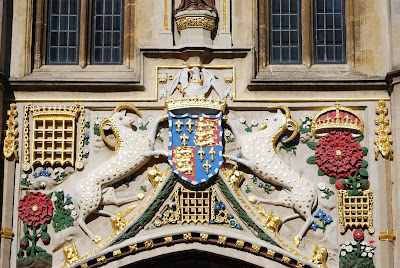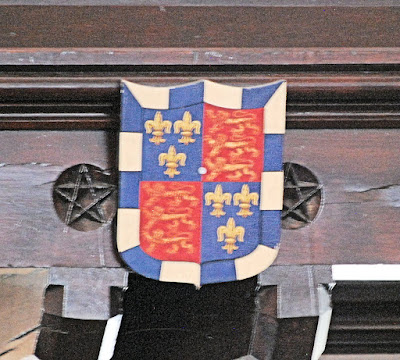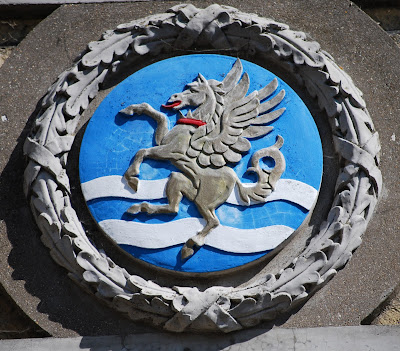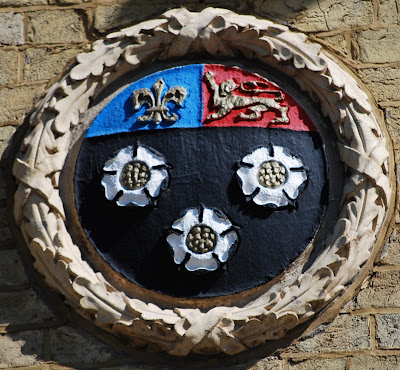This next coat of arms that I ran across in Cambridge, England, is a bit of a mystery.
For one thing, I only found one instance of it.
For another, I haven't been able to find its use anywhere else. Not even in the official media kit offered by the school. (What they actually use - a lot! - is the arms of the Cambridge University along with the name of the school: Judge Business School.
And for another, I am not at all certain that the arms that I saw have been granted by the College of Arms in London. Or if they have been, I'd love to know what the blazon is, because it's got me stumped.
In any event, on this entrance to the School, there are two shields: the one on the left is the arms of Cambridge University; the one on the right, I assume, is the arms of the Judge Business School.
The School was established in 1990 as the Judge Institute for Management Studies. A year later, in 1991, donations from Sir Paul and Lady Judge (of £8 million), together with other funds, provided the money to construct a building for the School. That building was completed in 1995.
In September 2005, the Judge Institute for Management Studies was renamed the Judge Business School, and in 2010 became the Cambridge Judge Business School. In November of that year it revised its logo to read "University of Cambridge Judge Business School".
Ah, but what of the purported coat of arms, which I have only found on the gate, above, and in detail immediately below, and nowhere else?
I've not found either an image or a blazon of Sir Paul Judge's coat of arms; the only reference to it that I have found notes that "swords on a scallop" feature on his coat of arms. So the chief here would appear to reference both Sir Paul (through the escallops) and Cambridge University (through the lion passant guardant), but what of the ermine chevron on the white field, or the three "round things" around the chevron? I mean, how would you even blazon those? The best I can come up with is On a roundel, Or a mullet of ten points azure dimidiating Argent a pallet gules between four pallets silver all within a bordure azure. And I'm not at all sure about any of that. Could the mullet be a sun? Yeah, maybe. And what are those gray/silver lines on each side of the red skinny pale? It's all very strange.
Alas, short of writing to the College of Arms for enlightenment, I appear to be out of luck, since I've found nothing at all on the internet that would help me learn more.
Not that it really matters, anyway. I mean, have I mentioned that the School does not use these arms? Anywhere? And if they don't even use them, what possible use could there be for us to know about them?






























































